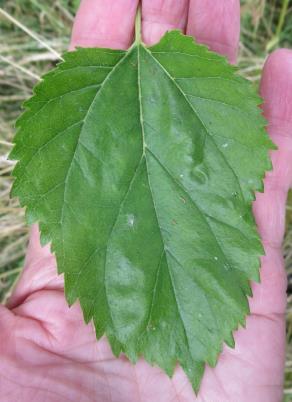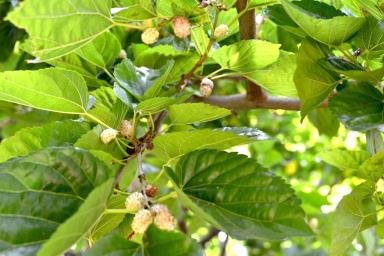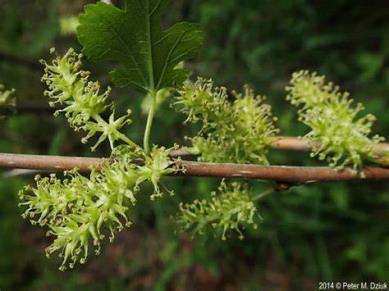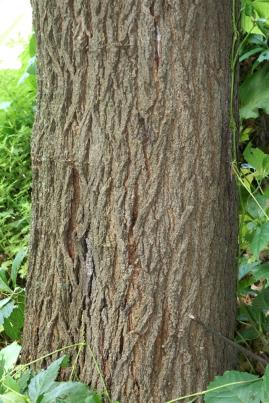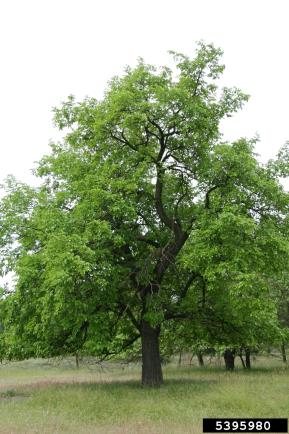
Escaped from cultivation and found in old fields, pastures, fence rows, and low, wet ground along streams.1
An Asian species, white mulberry was introduced by early settlers, who cultivated it for its berries and as fodder for an attempted silkworm industry.1
White mulberry is the favorite food of the silkworm caterpillar and in Asia is an important part of the silk-making industry. The fruit can be eaten fresh or made into jams, wine, and even ink. The wood has had various uses. In China, the leaves and bark are used for medicinal teas.1
Birds flock to mulberry trees when the fruit is ripe. Biologists understand that plants produce sweet fruits as a way to disperse seeds: The fruit costs the tree energy to produce, but it rewards birds and other animals for dispersing the indigestible seeds after they eat the fruit.1
White mulberry have glossy dark-green tooth-edged leaves, small green flower spikes.2
- White Mulberry. Missouri Department of Conservation. https://mdc.mo.gov/discovernature/field-guide/white-mulberry. No Publication Date. Accessed December 4, 2023.
- Identify a mulberry. Morus londinium. https://www.moruslondinium.org/map/identify. No Publication Date. Accessed December 4, 2023.
- https://www.lhprism.org/sites/default/files/media/pictures/White%20Mulberry%20Tree_0.jpg
- https://images.freeimages.com/images/largepreviews/522/white-mulberry-tree-3-1142421.jpg
- https://www.treeguideuk.co.uk/wp-content/uploads/2021/05/IMG_0659.jpeg
- https://th.bing.com/th/id/OIP.7HZrZLPKL6FYMVMLRMGrigHaFj?rs=1&pid=ImgDetMain
- https://newfs.s3.amazonaws.com/taxonimages-1000s1000/Moraceae/morus-alba-baatal.jpg


